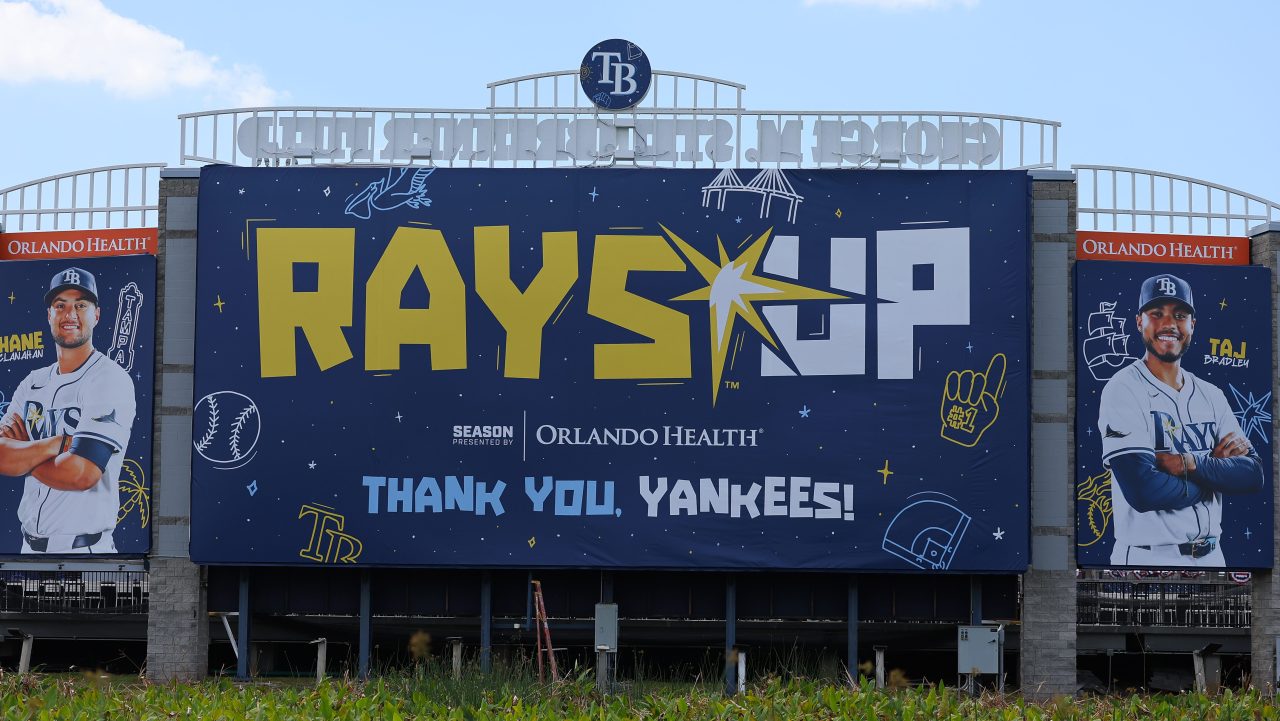
At some point this season, the Tampa Bay Rays will experience their first rain delay at a home game in franchise history.
With the Rays playing their 2025 home slate at the open-air Steinbrenner Field, after Hurricane Milton tore the roof off their own Tropicana Field in October, weather will now be a factor in everything from concessions to groundskeeping in a way the team has never managed before.
William Walsh, the Rays’ chief business officer, said though the team is responsible for stadium operations, it is relying on the embedded Yankees staff for weather preparations. “They are familiar with the building, the ins and outs, dealing with the weather,” Walsh said in a video interview.
Additionally, the team designated its vice president of fan relations, Eric Weisberg, as its official weather coordinator. When a game could be impacted by inclement weather, Weisberg will work with the managers of both teams, the Rays’ travel secretaries, MLB and a local meteorologist to keep up with ongoing weather patterns.
To build the team’s plans for bad weather, Weisberg consulted with the stadium staff already in place along with teams around MLB, and one team’s advice stuck with him.
“The [Pittsburgh] Pirates said they have delays where it’s not raining,” Weisberg said in a separate video interview. “You’re going to have delays where it may look [like] the inclement weather is coming on, but maybe they don’t want to start the game knowing that they would have to possibly stop it soon. Make sure that you have radar up on the video board, just from an educational standpoint, to let people know why.”
Last year was the wettest year on record for Tampa, as the city amassed 80.29 inches of rain, with over 80% of that total falling between June 1 and Oct. 15. The Tarpons, the Yankees’ Single-A affiliate in the Florida State League, had 20 of their 60 home games at Steinbrenner Field impacted by weather last season, with eight either postponed or canceled, according to NBC-affiliate station WFLA.
When it comes to a potential weather delay, Walsh said the Rays plan to use tech tools created by MLB and others to inform and engage fans until play resumes. The team is looking at creating concessions promotions via the MLB Ballpark app and text messages that can go out during weather stoppages.
“Maybe more than any other part of the country, the weather can change down here so quickly,” he said. “Being able to be agile, being able to have good communication flows in place—that’s really what we’re focused on, and using all the levers and tools that we have to do that.”
Rain isn’t the only concern for the Rays this season; fans will now be exposed to the area’s notorious summer heat and humidity. Large tent structures were added along Steinbrenner’s concourses to provide cover, shade and shelter for fans when they’re milling about the ballpark. Sunscreen and hydration stations were also put in place for fans and staffers alike to use on very hot game days. (Fans can bring in their own sealed 20-oz. bottles of cold water to games but can also refill empty cups up to 44 ounces.) Misting fans have been installed throughout Steinbrenner, and the team will host promotional giveaways of hats, cooling towels and more items to combat the heat.
Team staffers underwent a wardrobe change to contend with the elements. At the Trop, those who worked at the gates were allowed to wear shorts and closed-toe shoes, while everyone who worked inside the stadium was required to wear pants. Weisberg said the wardrobe is more relaxed at the open-air Steinbrenner; staffers can wear jerseys—allowing for better airflow in the Florida heat—as well as sneakers, sun hats and ponchos when necessary.
In preparation for the Florida weather, the Rays and MLB adjusted their schedule to maximize the better conditions. The Rays are playing 19 of their first 22 games and 37 of their first 54 at Steinbrenner Field. The schedule change means the team will play just 16 home games in July and August, when heat can be at its worst.
Another scheduling assist to ensure games are played is that start times for games in the summer months were pushed back to 7:35 p.m. to avoid the area’s typical late-afternoon showers. “Things I’ve heard over the years, even including when the [Miami] Marlins played in the outdoor stadium, was it wasn’t the games that were canceled as much, but it was the batting practice and all the prep that led up to that,” Weisberg said.
The club signaled its intent to return to Tropicana Field next season, and the St. Petersburg City Council last Thursday voted to approve $22.5 million in funding to replace its roof. Team owner Stu Sternberg told the city and Pinellas County that it will not move forward with the Historic Gas Plant District, a planned mixed-used development anchored by a new domed stadium for the Rays, which means the Trop may very well remain the Rays’ home.
For now, all eyes are on making the best of Steinbrenner Field in 2025.
“What we’ve been preaching to staff about and really embracing as the culture is just this notion of being able to pivot,” Walsh said. “This is maybe a hyper-exaggerated example of that.”
